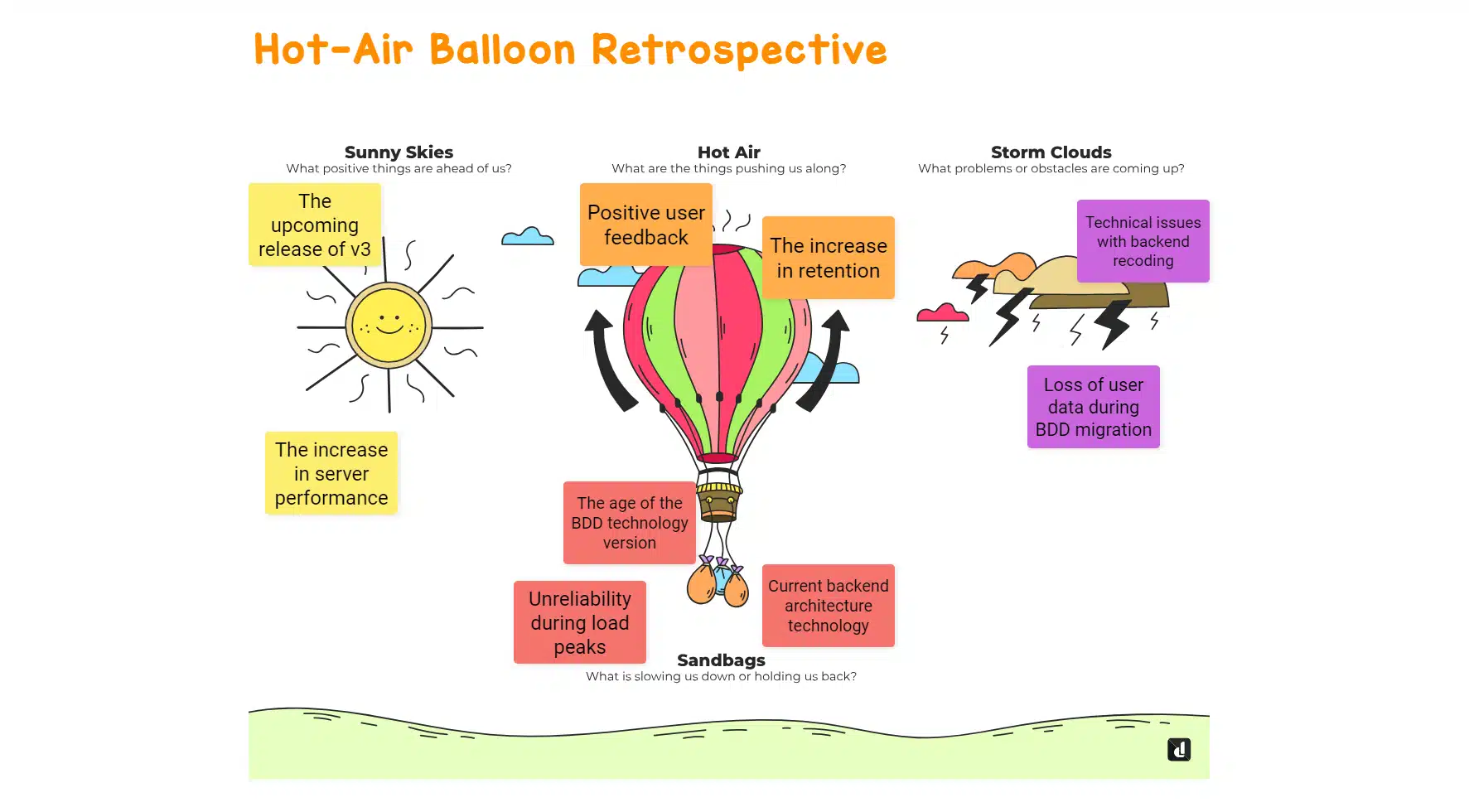Hot-Air Balloon Retrospective

What is the Hot-Air Balloon Retrospective?
The Hot-air Balloon Retrospective is a classic retrospective format, particularly effective for quickly identifying the elements that disrupt the proper functioning of the team and slow it down in achieving its objectives, but also what works and motivates it.
The template is a canvas representing a hot-air balloon suspended in the sky. Each element of the canvas has its own meaning:
- Hot Air: What helps us go higher? What drives us forward?
- Sandbags: What holds us back or pulls us down?
- Storm clouds: What obstacles or risks may arise in the project? For the team?
- Sunny days: What are the clearings on the horizon in the project? For the team?
This retrospective format combines evaluating past events and anticipating future obstacles or, on the contrary, positive outcomes. Therefore, it helps the team to assess its work and organization in the context of the whole project, not only at the sprint level.
How to run the Hot-Air Baloon Retrospective?
The Retrospective of the Hot Air Balloon generally takes place in 6 stages:
-
Step 1: Presentation of the theme
First, the facilitator or the Scrum Master explains to the participants the meaning of the four canvas elements: hot air, sandbags, storm clouds, and sunny days.
-
Step 2: Reflect on positive and negative past events
For 5 minutes, participants should reflect individually on the elements that have enabled the team to move forward and those that have hindered the achievement of its objectives. The reflection must be individual. As such, you can use the polling booth mode to prevent participants from influencing each other.
As a facilitator or Scrum Master, group similar ideas by theme once the ideas have been revealed and possibly commented on.
-
Step 3: Identification of future risks and opportunities
Then, for 5 minutes, the team members should identify the risks that could occur ahead and the positive aspects that could arise. Again, participants should lead the reflection individually.
Once the individual reflection has ended, group similar ideas by theme.
-
Step 4: Selection of the most relevant themes
Participants select the themes that seem most important to them by participating in a voting session.
-
Step 5: Proposal of areas for improvement
Based on the results of the voting session that should highlight the most critical issues, for 5 minutes, team members reflect on actions for improvement. This reflection can be carried out individually or collectively, depending on the team’s maturity and the workshop’s specific dynamics.
-
Step 6: Selection of the most relevant improvement actions
Still using a voting session, participants select the 3 most relevant improvement actions.
Once the actions have been selected, assign them a manager who will be responsible for ensuring that the tasks that have been defined are carried out correctly.
Some suggested resources to learn more about the Hot-Air Baloon Retrospective
- A concise article on the agile retrospective platform FunRetrospectives: Hot-Air Balloon – Bad Weather.
- A detailed article by professional Agile Coach Francesco Attanasio on Medium: Hot Air Balloon Retrospective.